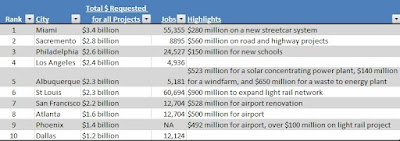Pittsburgh City Councilman Bill Peduto has publicly announced a plan to use a lightly used freight rail line for commuter rail service between the city's Hazelwood and Lawrenceville neighborhoods. The commuter service will be via a diesel rail engine on a rail line that is only used by the Allegheny Railroad a few times each day. I like the idea a lot, but I think it is only feasible if it is part of a broader initiative to leverage existing rail infrastructure and, most importantly, if it is integrated with the current light rail line that services the south hills and downtown. Without the downtown link to Oakland I do not see a separate line having enough riders to justify the cost and effort. Still, the low cost of implementing the line (estimated to be $25 million compared to $1 billion + for the downtown to Oakland link) make it seem like a very low risk venture, and the type of thing that could spur new development and additional passenger rail lines throughout Pittsburgh, as the region has a lot of rail lines, some that are hardly used or not even used at all.
When I emailed Bill Peduto with my concerns about the proposed line needing a connector to downtown he wrote the following response:
There are a few “spur” options from the main line. One would be to use the existing Jail Trail (the old B&O line) to connect to the parking garage/ The T stop on Second Avenue downtown. Another would be to utilize an abandoned line from Lawrenceville through the Strip to a potential stop near the convention center and the MLK busway downtown. However it is important to note that this East End Express would connect the two proposals being discussed in Harrisburg the Pittsburgh-Greensburg run and the Pittsburgh-Kittanning run. It should also connect to the busway and the T.Councilman Peduto also stated that he will soon be releasing a report on his proposed rail line.
While we are on the subject of regional rail initiatives, the plans to bring the Allegheny Valley Commuter rail line service from the Northeast Allegheny County / Route 28 corridor to downtown is moving forward, and it has a key sponsor in District 4 Congressman Jason Altmire, who a few months ago posted an announcement of his support of the project on his website. Despite the lack of rail projects in Mayor Ravenstahl's infrastructure stimulus wish list, it is good to know that some local officials like Altmire and Peduto are truly trying to move the region's transportation system forward.
Below is the Google Map I created to show the Peduto rail line and how it could link up to the proposed Allegheny Valley commuter line.
View Larger Map















